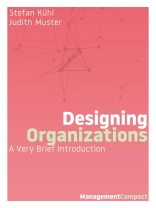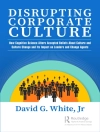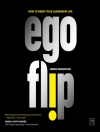When (re-)designing organizations, one must first be clear about what is meant by the structures of an organization and what can be done in order to change them. In this book, we present communication channels, programs and personnel as central structures. We also unfold the aspects that come to the forefront when one focuses on either the formal, the informal or the display side of an organization. At the core, we elaborate on how structures cause blind spots, and how these can be utilized for processes of change.When (re-)designing organizations, one must first be clear about what is meant by the structures of an organization and what can be done in order to change them. In this book, we present communication channels, programs and personnel as central structures. We also unfold the aspects that come to the forefront when one focuses on either the formal, the informal or the display side of an organization. At the core, we elaborate on how structures cause blind spots, and how these can be utilized for processes of change.
表中的内容
Foreword
1. The Organization—What Is It, and How Can It Be Understood?—Introduction
1.1 The Structure of Organizations
1.2 The Three Aspects of an Organization
1.3 Structure Matrix for the Analysis of Organizations
2. Beyond an Instrumental-Rational Narrowing in the Design of Organizations
2.1 The Dominance of Instrumental-Rational Thinking in the Conceptualization of Organizati-onal Design
2.2 The Function of an Instrumental-Rational Approach in the Design of an Organization
2.3 The Limits of the Instrumental-Rational View of Organizations
3. How Can Organizational Structures Be Designed?
3.1 Observational Latencies—the Starting Point in Design
3.2 Communicational Latency—an Initial Definition
3.3 Identification of Mobile and Immobile Structural Characteristics
3.4 On the Production of Variations in the Organization
3.5 Promoting Selections
4. On Working with Latencies—Conclusion
Bibliography












